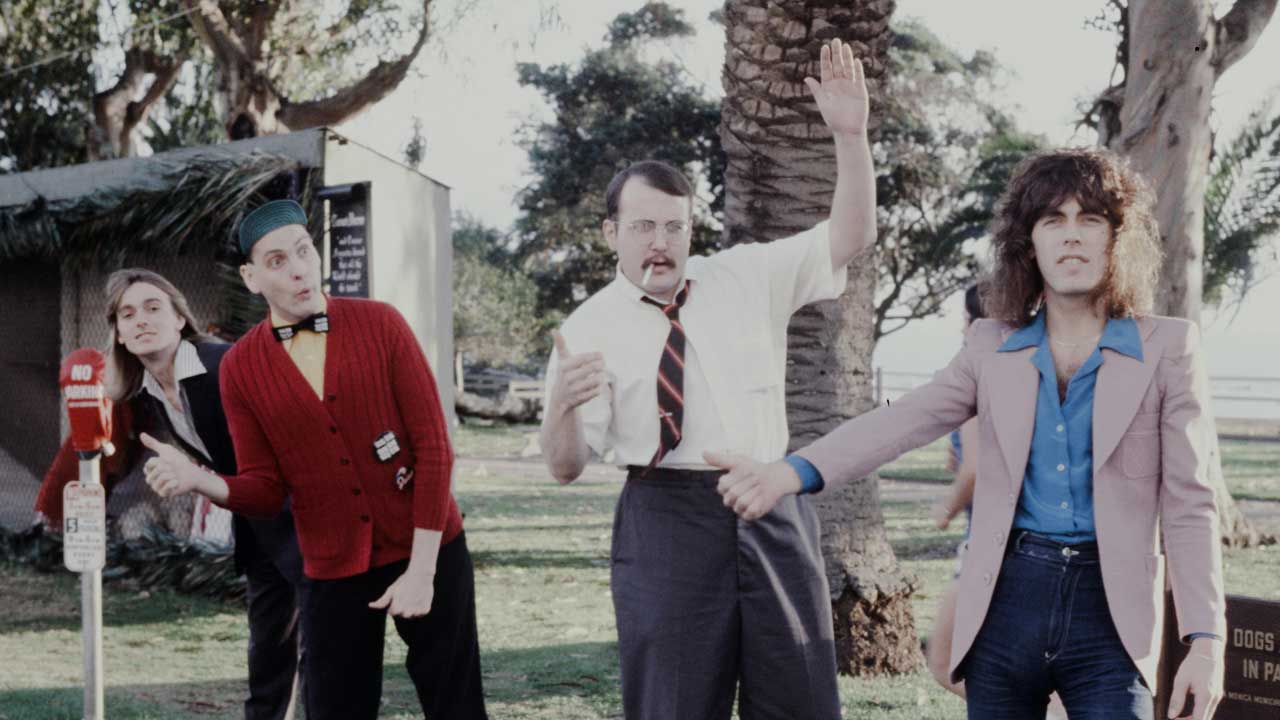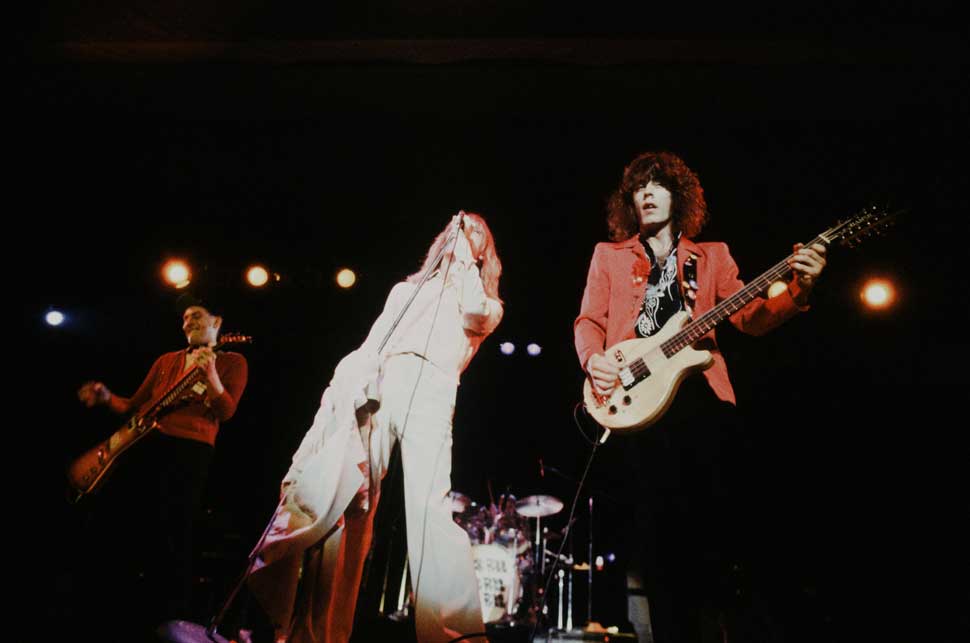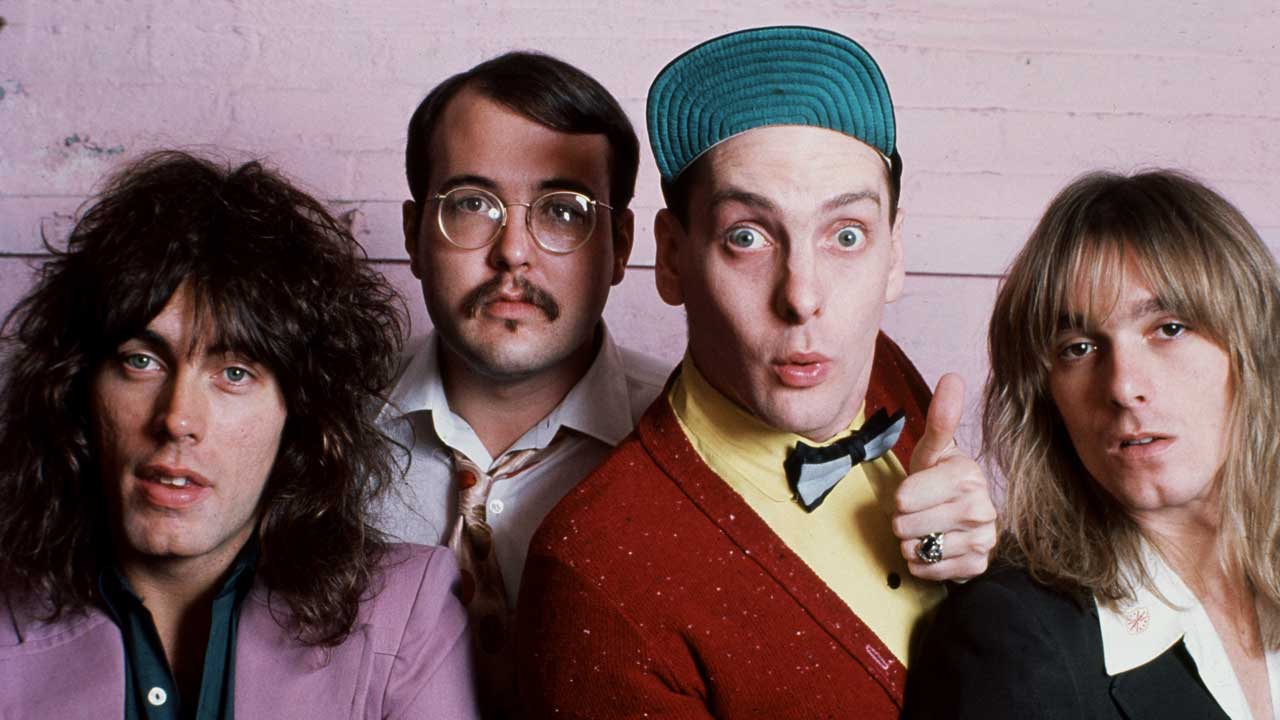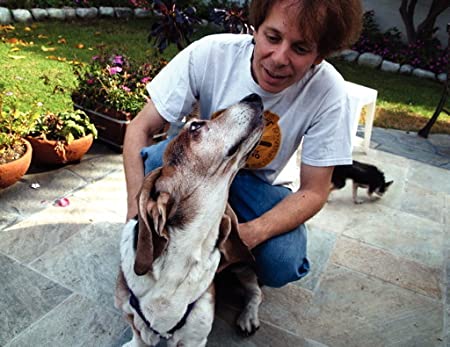Life happens to you when you’re busy making other plans,’ John Lennon once sang. And never in a million years could Cheap Trick have imagined how their career would be transformed as the result of a monstrous fluke.
Sure, they had great commercial songs with giant hooks, and a distinctive image which played off the visual duality of the movie star good looks of lead vocalist Robin Zander and bassist Tom Petersson, and resident “weirdos” – lead guitarist Rick Nielsen and drummer, Bun E Carlos. But there have been hundreds of other worthy bands who’ve also possessed all the right ingredients for success, but who the fickle hand of fate has tossed on to the ever growing rock’n’roll scrapheap.
Dateline 1979. Cheap Trick mania had hit the world. After years of slogging it out on the road playing every ratty dive in the States or opening for the likes of Kansas, Santana, Kiss and Be-Bop Deluxe, Cheap Trick had finally arrived. They’d achieved what only a few years prior had seemed to be a near impossibility – superstardom. Their 1979 live album, Cheap Trick At Budokan was an international sensation and its follow-up studio release, Dream Police, was tearing up the US charts on the heels of the Beatlesque ballad Voices and the epic title track.
However, just prior to this massive success, the Rockford, Illinois quartet’s prospects for a prosperous music career were looking decidedly bleak. “If it weren’t for …Budokan,” says Robin Zander,” it might have been the end for us. We were in debt by about a million dollars. That album saved us from probable obscurity.”

Rewind to early 1978, and despite a series of critically acclaimed records – Cheap Trick, In Color, Heaven Tonight – and an endless slate of punishing road work, the band couldn’t get arrested in the US. Their three albums had flopped, and with constant touring draining their finances the band were in trouble. Meanwhile, unexpectedly, and thousands of miles from their hometown, Cheap Trick had broken the Japanese market, racking up three Gold albums and a string of Top 10 hits, such as Clock Strikes Ten, I Want You To Want Me and Surrender.
By late April 1978 Cheap Trick were heading to the Orient for their first Japanese tour, primed to revel in the glory of their newly acquired fame. Landing in Japan, 5,000 screaming fans greeted them at the airport. Rick Nielsen laughingly recalls, “We rode coach on the way there and first class on the way back.”

Throughout their stay, the band would experience the same uncontrollable mania that their spiritual musical forefathers, The Beatles, had witnessed 12 years earlier on their last world tour. Official band photographer Bob Alford remembers the ensuing madness: “It was just like Beatlemania. Gangs of Japanese fans were chasing them everywhere trying to rip their clothes off. I remember girls hanging out of the side of high speed taxis taking photos, risking life and limb. It was nuts!”
“It was really dangerous for us to even do anything because the people would just get crushed and dive in front of trains and out of taxis,” Nielsen told Guitar Player. “There were thousands of people in the hotels and the lobbies. You couldn’t look out the window or else people would just go wild and the hotels would throw us out.”
The band were slated to perform shows on April 27 in Osaka and on April 28 and 29 at Tokyo’s Budokan, a 14,000-seat arena which had previously hosted performances by the likes of The Beatles, Led Zeppelin and Deep Purple. The idea to record a live album didn’t come from the band, though, it was a decision made by the suits.
“In Japan, CBS/Sony was splitting into two companies,” explains Bun E Carlos. “They decided that every time a band on Epic or Columbia came over they’d record their show and put out a series of Live At Budokan albums. Bob Dylan and Cheap Trick were the first albums they released.”
By this time, Cheap Trick were one of the world’s top live acts, hardened by years of rigorous touring. “We were busy as hell, playing nearly 300 dates a year,” says Petersson. Their incendiary shows in Japan captured a band at the height of their live powers.
Onstage, lead guitarist Rick Nielsen was a cartoon character run amok, a tsunami of wild, distorted power chords and demented showmanship, who’d routinely bombard the audience with a hailstorm of guitar picks. Zander’s between-song patter could seemingly incite the primarily female audience into a frenzy at will. His song introductions were carefully worded. “They told us to make sure Robin spoke slowly so the Japanese audience could understand him,” Nielsen admits.
Drenched in rapturous applause and punctuated by the riotous screaming of thousands of devoted fans, the insane audience reaction made an indelible impression on the quartet. “The crowd response was incredible,” Nielsen affirms. “It was so loud it was almost frightening.”
“It was mainly young girls and it kind of sounded like a Hannah Montana concert more than Woodstock,” laughs Tom Petersson.
“Live albums are often beefed up and although it sounds phoney, the Budokan audience was for real,” Rick Nielsen said in 1979.

Up to that point, listening to Cheap Trick on record and seeing them live were two markedly different propositions. The band were gravely disappointed with the production of 1977’s In Color, as Tom Petersson laments: “The label tried to make us radio-friendly and safe because our first record didn’t do well, and it completely wrecked the way we sounded. They said, ‘We love you guys, if only you sounded like someone else, it would be great.’
"To me, that makes no fucking sense. The label thought we were too heavy and too weird. Jack Douglas, who produced our first album, he understood us. That’s the way we sounded. That second record has all these great songs and it doesn’t sound anything like us with that Shakey’s Pizza Parlor version of I Want You To Want Me. When I hear that version now I go, ‘Oh my God, is that lame!’. The album failed miserably everywhere except in Japan.”
In 1976, the band had recorded I Want You To Want Me for their first album but its primal scream ferocity made it sound more like a lost track from John Lennon’s Plastic Ono Band album than a sure fire hit single. Ironically, while a live rendition of the song would later become Cheap Trick’s first smash hit in the US, it wasn’t originally in the set for the Japanese shows. Nielsen would note, “We’d taken it out of the American setlist because the single had bombed. We brought it back because the Japanese had turned the In Color version into a hit. The live version was the way it was always supposed to sound.”
Seeing Cheap Trick live, their songs took on a much harder edge. “The live record is very heavy and the songs reflect that. It’s the way we sound on stage and that ultimately translated on the album,” attests Petersson.
Surrender is one of those songs that came alive on the concert stage. Decades on, it’s gone on to become one of Cheap Trick’s defining anthems. A perfect marriage of thunderous guitars and Who’s Next-sounding synthesisers, the song’s wacky lyrics spin an unsettling image of parents ‘rolling on the couch/Rolling numbers, rock and rolling/Got my Kiss records out’.
Kiss’s Paul Stanley would later remark, “I thought Surrender was very cool. There were a lot of bands who were obviously influenced by us who cited us as an influence until they became big themselves, and then they decided that they forgot who their influences were. It was cool that Cheap Trick never lost that.”
When assembling the tracks for the finished record, the Japanese record company pushed hard for the inclusion of more commercial songs (Come On, Come On, Surrender, I Want You To Want Me, Clock Strikes Ten) at the expense of experimental fare like ELO Kiddies, Terry Reid’s Speak Now Or Forever Hold Your Peace and the aggressive guitar freakout, Auf Wiedersehen, a song about suicide.
“Epic/Sony whittled it down to a single album and included the most radio-worthy songs of the bunch. They wanted it to sell big,” says Zander. The label also demanded that the band include three new songs on the record. Need Your Love and Look Out were unveiled during the shows – they were recorded for previous albums but unused – while the group also reintroduced a favourite cover they’d performed regularly in their club days, a ferocious rendition of Fats Domino’s Ain’t That A Shame.
Back in the States, the band were flying high on their triumphant reception in the Far East, but work still had to be done on the live record. Zander expands, “I remember between gigs in ’78, me and Rick were wearing ourselves out flying back and forth to New York to do mixing. It was lots of fun. We produced it, so at that time it was the album we were most satisfied with.”
Rumours have circulated for years about the authenticity of such classic live albums as Thin Lizzy’s Live And Dangerous, Aerosmith’s Live Bootleg and Frampton Comes Alive, but Bun E Carlos insists that on Budokan, “there was very little fixing done in the studio. We patched up some guitar mistakes, and we fixed some of Rick’s background vocals because there were times he wasn’t near the mic. But it’s about 98 per cent unaltered, and you can tell because there are clinkers all over the place, like me dropping a drum stick in Surrender or Rick hitting a wrong chord.”

In October 1978, Cheap Trick At Budokan was released in Japan and was a commercial blockbuster. They’d conquered the Far East and now the rest of the world was in their sights. A significant buzz was starting to build about the band in the US. Rolling Stone ran a story on the rising Midwest upstarts and word spread quickly.
“Some imports showed up in places like Boston. There was a grassroots build happening at hip record stores and college radio immediately jumped on it,” Carlos enthuses. The album would go on to sell a whopping 75,000 copies in the States, making it the best selling import album at the time. Epic Records took close notice of this growing phenomenon and released the radio sampler, From Tokyo To You.
“Radio started playing the heck out of that thing,” marvels Carlos. Soon afterwards, they issued the album worldwide where it soared to No.4 on the Billboard charts. I Want You Want Me was a smash Top 10 hit and follow-up single, Ain’t That A Shame landed at Number 35. “When the import started selling, the company was only too happy to bring the album into the mainstream,” remembers local Epic promotion manager, William ‘Biff’ Kennedy.
Contributing to the album’s unprecedented success, Budokan hit at a time when live albums like Live And Dangerous, Queen’s Live Killers, Love You Live by The Rolling Stones, and Frampton Comes Alive were meeting with enormous success. But as Tom Petersson bluntly reveals, “To be honest I’m not really a big fan of live albums except for The Who's Live At Leeds, which is unbeatable. I don’t think any other live albums hold up to that one.”
The bassist might not have been a fan, but as a consequence of their live album’s success Cheap Trick’s status was transformed from opening act to headliner.
“It was four guys from the Midwest doing what they do best, playing live,” shrugs Rick Nielsen. “The songs still stand up. We made the Budokan famous and the Budokan made us famous.”

However, there was one major drawback to the album’s unexpected success; it scuppered plans for the release of their next studio record, Dream Police. “Budokan took everybody by surprise,” admits the guitarist. “Our label thought the live album would only sell two or three hundred thousand copies in the US and then Dream Police would come out and be a mega hit. Then suddenly the live album took off like crazy and Dream Police sat around for a year until it came out.”
Since Cheap Trick first played at Budokan, many other rock icons have followed in their footsteps and released albums taped at that historic concert hall. Yet mention the word Budokan to your average music punter and most likely the first thing they’ll think of is Cheap Trick. Despite all of their post-Budokan achievements, the group’s landmark 1979 live album remains a quintessential milestone in their career.
And the fact that its runaway success was so unexpected makes its enduring popularity even more rewarding 30 years later. “Any time you have big success it comes out of left-field,” notes Petersson. “You can’t plan it. There’s no formula. …Budokan was Cheap Trick finally winning the lottery.”
This article originally appeared in Classic Rock 125, published in November 2008.

